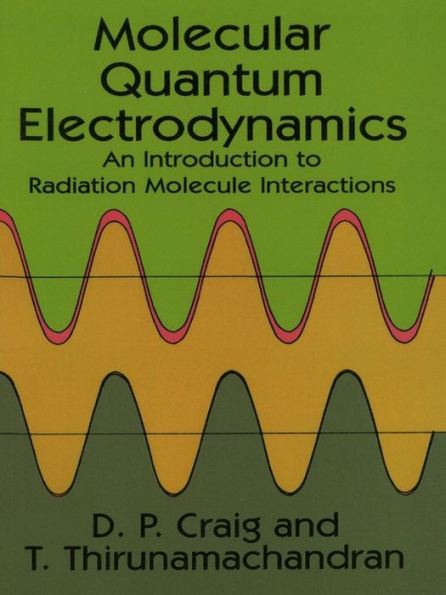This systematic introduction to quantum electrodynamics focuses on the interaction of radiation with outer electrons and nuclei of atoms and molecules, answering the long-standing need of chemists and physicists for a comprehensive text on this highly specialized subject.Geared toward postgraduate students in the chemical sciences who require an understanding of quantum electrodynamics as applied to the interpretation of optical experiments on atoms and molecules, the text offers a detailed explanation of the quantum theory of electromagnetic radiation and its interaction with matter. It features formal derivations of the quantized field matrix elements for an amazing number of laser-molecule interaction effects: one- and two-photon absorption and emission; Rayleigh and Raman scattering; dispersion forces in a radiation field; radiation-induced chiral discrimination; both linear and nonlinear optical processes such as Coherent Anti-Stokes Raman Scattering (CARS) and laser-induced optical rotation; self-energy; and the Lamb shift.Virtually a one-volume encyclopedia, this self-contained book starts with first principles, making it useful both for students and experts in the field. Molecular physicists, quantum chemists, chemical physicists, and theoretical chemists will find essential calculation techniques explained with the greatest clarity.
1111447444
Molecular Quantum Electrodynamics
This systematic introduction to quantum electrodynamics focuses on the interaction of radiation with outer electrons and nuclei of atoms and molecules, answering the long-standing need of chemists and physicists for a comprehensive text on this highly specialized subject.Geared toward postgraduate students in the chemical sciences who require an understanding of quantum electrodynamics as applied to the interpretation of optical experiments on atoms and molecules, the text offers a detailed explanation of the quantum theory of electromagnetic radiation and its interaction with matter. It features formal derivations of the quantized field matrix elements for an amazing number of laser-molecule interaction effects: one- and two-photon absorption and emission; Rayleigh and Raman scattering; dispersion forces in a radiation field; radiation-induced chiral discrimination; both linear and nonlinear optical processes such as Coherent Anti-Stokes Raman Scattering (CARS) and laser-induced optical rotation; self-energy; and the Lamb shift.Virtually a one-volume encyclopedia, this self-contained book starts with first principles, making it useful both for students and experts in the field. Molecular physicists, quantum chemists, chemical physicists, and theoretical chemists will find essential calculation techniques explained with the greatest clarity.
19.95
In Stock
5
1

Molecular Quantum Electrodynamics
336
Molecular Quantum Electrodynamics
336Related collections and offers
19.95
In Stock

Product Details
| ISBN-13: | 9780486135632 |
|---|---|
| Publisher: | Dover Publications |
| Publication date: | 10/16/2012 |
| Series: | Dover Books on Chemistry |
| Sold by: | Barnes & Noble |
| Format: | eBook |
| Pages: | 336 |
| File size: | 25 MB |
| Note: | This product may take a few minutes to download. |
About the Author
From the B&N Reads Blog
